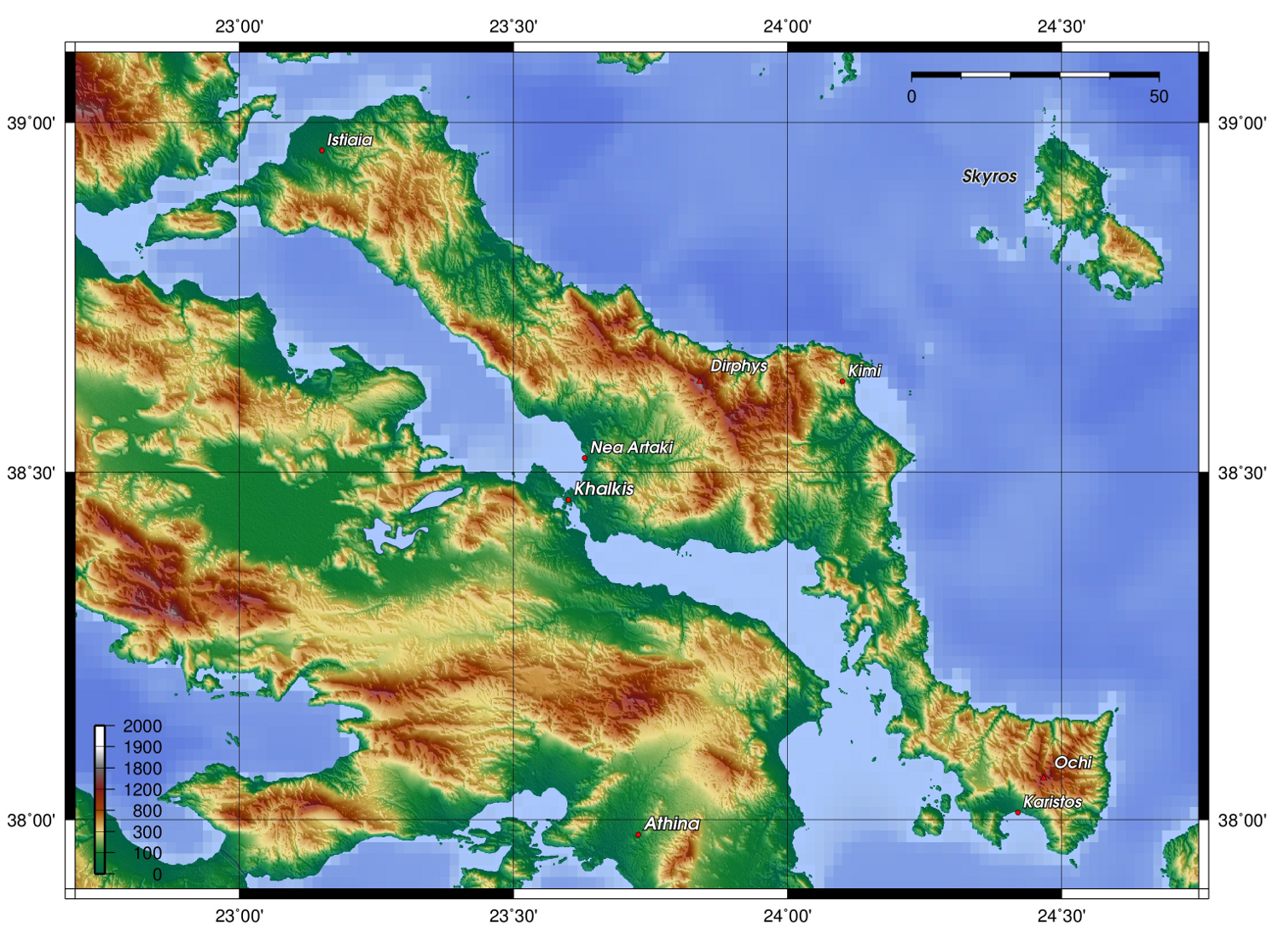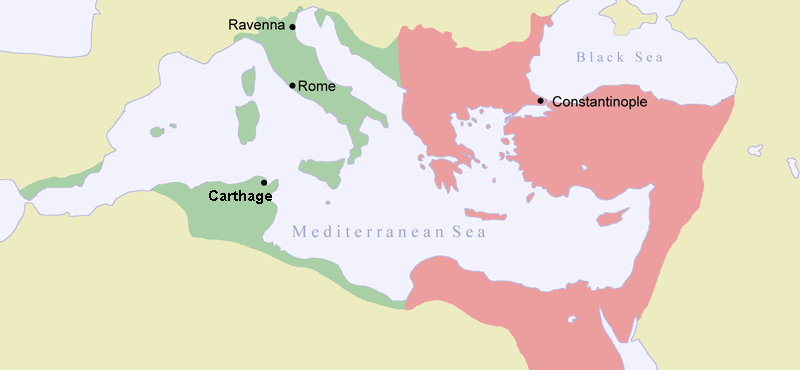|
Orobiae
Orobiae or Orobiai () was a town on the western coast of ancient Euboea, between Aedepsus and Aegae, which possessed an oracle of Apollo Selinuntius. The town was partly destroyed by an earthquake and an inundation of the sea in the 426 BC Malian Gulf tsunami. This town seems to be the one mentioned by Stephanus of Byzantium Stephanus or Stephen of Byzantium (; , ''Stéphanos Byzántios''; centuryAD) was a Byzantine grammarian and the author of an important geographical dictionary entitled ''Ethnica'' (). Only meagre fragments of the dictionary survive, but the epit ... under the name of Orope (Ὀρόπη), who describes it as "a city of Euboea, having a very renowned temple of Apollo." Its site is located near the modern village of Rovies. References Populated places in ancient Euboea Former populated places in Greece Classical oracles {{AncientEuboea-geo-stub ... [...More Info...] [...Related Items...] OR: [Wikipedia] [Google] [Baidu] |
Aegae (Euboea)
Aegae or Aigai () was a town on the west coast of ancient Euboea, north of Chalcis and a little south of Orobiae, opposite the mainland city of Anthedon. It had disappeared in the time of the geographer Strabo. Strabo records a sanctuary of Aegean Poseidon on a mountain nearby. It seems to be distinct from legendary Aegae, the namesake of the Aegean Sea, which was situated on the east coast of the island, near modern Kymi. It's not unlikely that Aegae got actually switched to Kymi/Cuma, as the generic name ''Kymi/Cuma'', just means ''city'' in the Aeolic dialect. Legendary Aegae is mentioned e.g. by Homer in Book 5 of the ''Odyssey'', in which Poseidon "lashed his long-maned horses and drove to Aegae, where he had his famous palace" after having destroyed Odysseus' raft with a storm. It was also mentioned by Homer in Book 13 of the Iliad The ''Iliad'' (; , ; ) is one of two major Ancient Greek epic poems attributed to Homer. It is one of the oldest extant works of lite ... [...More Info...] [...Related Items...] OR: [Wikipedia] [Google] [Baidu] |
426 BC Malian Gulf Tsunami
The 426 BC Malian Gulf tsunami devastated the coasts of the Malian and Euboean Gulfs, Greece, in the summer of 426 BC. Thucydides inquired into its causes, and concluded that the tsunami must have been caused by an earthquake.Thucydides"A History of the Peloponnesian War", 3.89.2–5/ref> He was thus historically the first known to correctly interpret the cause of a tsunami as a preceding geological event. Herodotus, in contrast, had attributed the Potidaea tsunami to the divine wrath of Poseidon. Ancient records The Malian Gulf paleotsunami was caused by one of a series of earthquakes in the summer of 426 BC which affected the course of the Peloponnesian War by forcing the advancing Spartans to abort their planned invasion of Attica.Thucydides“A History of the Peloponnesian War”, 3.89.1/ref> Strabo reported that throughout Greece parts of islands were submerged, rivers permanently displaced and towns devastated.Strabo"Geography", 1.3.20/ref> The tsunami itself hit the c ... [...More Info...] [...Related Items...] OR: [Wikipedia] [Google] [Baidu] |
Ancient Euboea
Euboea ( ; , ), also known by its modern spelling Evia ( ; , ), is the second-largest Greek island in area and population, after Crete, and the sixth largest island in the Mediterranean Sea. It is separated from Boeotia in mainland Greece by the narrow Euripus Strait (only at its narrowest point). In general outline it is a long and narrow island; it is about long, and varies in breadth from to . Its geographic orientation is from northwest to southeast, and it is traversed throughout its length by a mountain range, which forms part of the chain that bounds Thessaly on the east, and is continued south of Euboia in the lofty islands of Andros, Tinos and Mykonos. It forms most of the regional unit of Euboea, which also includes Skyros and a small area of the Greek mainland. Name Like most of the Greek islands, Euboea was known by other names in antiquity, such as ''Macris'' (Μάκρις) and ''Doliche'' (Δολίχη) from its elongated shape, or ''Ellopia'' (after Ellop ... [...More Info...] [...Related Items...] OR: [Wikipedia] [Google] [Baidu] |
Aedepsus
Aedepsus or Aidepsos () was a town upon the northwestern coast of ancient Euboea, 160 stadia from Cynus on the opposite coast of the Opuntian Locris. It contained warm baths sacred to Heracles, which were used by the Roman dictator Sulla. These warm baths are still found about a mile (1.5 km) above the modern town of Aidipsos Aidipsos (, ) is a village and a former municipality in Euboea, Greece. The municipality Aidipsos was founded in 1997 by the merger of the municipality Loutra Aidipsou with the communities Agios and Gialtra. Since the 2011 local government refor .... Its site is located near the modern village of Loutra Aidipsou. References Populated places in ancient Euboea Former populated places in Greece {{AncientEuboea-geo-stub ... [...More Info...] [...Related Items...] OR: [Wikipedia] [Google] [Baidu] |
Oracle
An oracle is a person or thing considered to provide insight, wise counsel or prophetic predictions, most notably including precognition of the future, inspired by deities. If done through occultic means, it is a form of divination. Description The word ''oracle'' comes from the Latin verb ''ōrāre'', "to speak" and properly refers to the priest or priestess uttering the prediction. In extended use, ''oracle'' may also refer to the ''site of the oracle'', and the oracular utterances themselves, are called ''khrēsmoí'' (χρησμοί) in Greek. Oracles were thought to be portals through which the gods spoke directly to people. In this sense, they were different from seers (''manteis'', μάντεις) who interpreted signs sent by the gods through bird signs, animal entrails, and other various methods.Flower, Michael Attyah. ''The Seer in Ancient Greece.'' Berkeley: University of California Press, 2008. The most important oracles of Greek antiquity were Pythia (priestes ... [...More Info...] [...Related Items...] OR: [Wikipedia] [Google] [Baidu] |
Apollo
Apollo is one of the Twelve Olympians, Olympian deities in Ancient Greek religion, ancient Greek and Ancient Roman religion, Roman religion and Greek mythology, Greek and Roman mythology. Apollo has been recognized as a god of archery, music and dance, truth and prophecy, healing and diseases, the Sun and light, poetry, and more. One of the most important and complex of the Greek gods, he is the son of Zeus and Leto, and the twin brother of Artemis, goddess of the hunt. He is considered to be the most beautiful god and is represented as the ideal of the ''kouros'' (ephebe, or a beardless, athletic youth). Apollo is known in Greek-influenced Etruscan mythology as ''Apulu''. As the patron deity of Delphi (''Apollo Pythios''), Apollo is an oracular god—the prophetic deity of the Pythia, Delphic Oracle and also the deity of ritual purification. His oracles were often consulted for guidance in various matters. He was in general seen as the god who affords help and wards off e ... [...More Info...] [...Related Items...] OR: [Wikipedia] [Google] [Baidu] |
Stephanus Of Byzantium
Stephanus or Stephen of Byzantium (; , ''Stéphanos Byzántios''; centuryAD) was a Byzantine grammarian and the author of an important geographical dictionary entitled ''Ethnica'' (). Only meagre fragments of the dictionary survive, but the epitome is extant, compiled by one Hermolaus, not otherwise identified. Life Nothing is known about the life of Stephanus, except that he was a Greek grammarian who was active in Constantinople, and lived after the time of Arcadius and Honorius, and before that of Justinian II. Later writers provide no information about him, but they do note that the work was later reduced to an epitome by a certain Hermolaus, who dedicated his epitome to Justinian; whether the first or second emperor of that name is meant is disputed, but it seems probable that Stephanus flourished in Byzantium in the earlier part of the sixth century AD, under Justinian I. The ''Ethnica'' Stephanos' work, originally written in Greek, takes the form of an alphabetical ... [...More Info...] [...Related Items...] OR: [Wikipedia] [Google] [Baidu] |
Populated Places In Ancient Euboea
Population is a set of humans or other organisms in a given region or area. Governments conduct a census to quantify the resident population size within a given jurisdiction. The term is also applied to non-human animals, microorganisms, and plants, and has specific uses within such fields as ecology and genetics. Etymology The word ''population'' is derived from the Late Latin ''populatio'' (a people, a multitude), which itself is derived from the Latin word ''populus'' (a people). Use of the term Social sciences In sociology and population geography, population refers to a group of human beings with some predefined feature in common, such as location, race, ethnicity, nationality, or religion. Ecology In ecology, a population is a group of organisms of the same species which inhabit the same geographical area and are capable of interbreeding. The area of a sexual population is the area where interbreeding is possible between any opposite-sex pair within the area ... [...More Info...] [...Related Items...] OR: [Wikipedia] [Google] [Baidu] |
Former Populated Places In Greece
A former is an object, such as a template, gauge or cutting die, which is used to form something such as a boat's hull. Typically, a former gives shape to a structure that may have complex curvature. A former may become an integral part of the finished structure, as in an aircraft fuselage, or it may be removable, being used in the construction process and then discarded or re-used. Aircraft formers Formers are used in the construction of aircraft fuselage, of which a typical fuselage has a series from the nose cone to the empennage, typically perpendicular to the longitudinal axis of the aircraft. The primary purpose of formers is to establish the shape of the fuselage and reduce the column length of stringers to prevent instability. Formers are typically attached to longerons, which support the skin of the aircraft. The "former-and-longeron" technique (also called stations and stringers) was adopted from boat construction, and was typical of light aircraft built unt ... [...More Info...] [...Related Items...] OR: [Wikipedia] [Google] [Baidu] |



